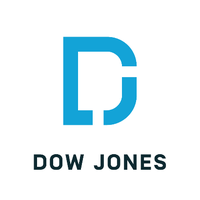Consumer Sentiment Dips as Inflation Fears Resurface
March 18, 2025, 3:51 pm

Location: United States, District of Columbia, Washington
Employees: 1001-5000
Founded date: 1934
Total raised: $392.5M

Location: United States, Michigan, Ann Arbor
Employees: 10001+
Founded date: 1817
Total raised: $5.2M
The U.S. economy is at a crossroads. Consumer sentiment has taken a nosedive, reminiscent of the dark days of late 2022. A recent survey from the University of Michigan reveals that Americans are feeling the weight of uncertainty. The consumer sentiment index plummeted to 57.9 in mid-March, a stark 10.5% drop from February. This decline is the largest since inflation hit 7.1% back in November 2022.
Inflation, once a distant worry, is now back in the spotlight. Consumers expect inflation to rise to 4.9% over the next year. This marks the highest expectation since the turbulent days of late 2022. The air is thick with anxiety. Many cite the unpredictable nature of government policy as a key factor in their pessimism.
The Federal Reserve, once seen as the pilot guiding the economy to safety, now faces turbulence. In December, inflation was at a manageable 2.9%, and GDP growth seemed promising at an annualized rate of 2.3%. But now, the landscape has shifted. President Trump’s tariffs are creating headwinds, shaking consumer confidence and raising fears of a recession.
Treasury Secretary Scott Bessent has added to the gloom. He warned that there are “no guarantees” against a recession. His comments echo through the financial markets, casting a shadow over investor optimism. Stocks saw a brief bounce last Friday, with the S&P 500 rising 2.13%, the Dow Jones up 1.65%, and the Nasdaq climbing 2.61%. However, this uptick feels more like a dead cat bounce than a sign of recovery. The S&P 500 has lost a staggering $5.28 trillion in just three weeks.
The market's volatility reflects the uncertainty gripping both Wall Street and Main Street. Investors are relieved by the absence of bad tariff news, but that relief is fleeting. The sentiment is decidedly downbeat.
Across the Atlantic, the U.K. is facing its own economic challenges. The economy contracted by 0.1% in January, contrary to expectations of growth. The Bank of England is expected to hold interest rates steady at 4.5% in light of this contraction.
Meanwhile, in the tech world, Klarna, a Swedish buy now, pay later firm, has filed for an IPO. This move to go public on the New York Stock Exchange is a significant blow to European exchanges, which have struggled to keep homegrown tech companies. Klarna’s decision highlights the shifting landscape of global finance.
In the broader context, the U.S. is losing ground to China in the race for nuclear fusion energy. Once the leader in this field, the U.S. is now facing stiff competition. China is investing heavily, spending twice as much and building projects at an unprecedented pace. Nuclear fusion, often dubbed the holy grail of clean energy, promises immense potential. It produces four times more energy per kilogram of fuel than traditional nuclear fission and 4 million times more than burning coal. Yet, the challenge remains. Currently, the only functioning fusion power plants are stars.
As the U.S. economy grapples with these challenges, the upcoming retail sales report for February will be crucial. It will reveal whether the plummeting consumer sentiment has translated into declining sales. Retail CEOs are already sounding alarms, warning of potential downturns.
The Federal Reserve's upcoming meeting will also be closely watched. While a rate cut is not expected, Chair Jerome Powell’s comments on the economy will be scrutinized. Investors are eager for signs of stability, but the outlook remains murky.
In this environment, consumers are tightening their belts. The fear of rising prices looms large. The uncertainty surrounding government policy adds to the anxiety. The economy feels like a ship caught in a storm, with no clear direction.
As we navigate these turbulent waters, one thing is clear: consumer confidence is fragile. The road ahead is uncertain, and the stakes are high. The interplay between inflation, consumer sentiment, and government policy will shape the economic landscape in the coming months.
In conclusion, the U.S. economy stands at a pivotal moment. The clouds of uncertainty are gathering, and the winds of change are blowing. How we respond to these challenges will determine our economic future. The time for action is now. The ship must be steadied before it veers off course.
Inflation, once a distant worry, is now back in the spotlight. Consumers expect inflation to rise to 4.9% over the next year. This marks the highest expectation since the turbulent days of late 2022. The air is thick with anxiety. Many cite the unpredictable nature of government policy as a key factor in their pessimism.
The Federal Reserve, once seen as the pilot guiding the economy to safety, now faces turbulence. In December, inflation was at a manageable 2.9%, and GDP growth seemed promising at an annualized rate of 2.3%. But now, the landscape has shifted. President Trump’s tariffs are creating headwinds, shaking consumer confidence and raising fears of a recession.
Treasury Secretary Scott Bessent has added to the gloom. He warned that there are “no guarantees” against a recession. His comments echo through the financial markets, casting a shadow over investor optimism. Stocks saw a brief bounce last Friday, with the S&P 500 rising 2.13%, the Dow Jones up 1.65%, and the Nasdaq climbing 2.61%. However, this uptick feels more like a dead cat bounce than a sign of recovery. The S&P 500 has lost a staggering $5.28 trillion in just three weeks.
The market's volatility reflects the uncertainty gripping both Wall Street and Main Street. Investors are relieved by the absence of bad tariff news, but that relief is fleeting. The sentiment is decidedly downbeat.
Across the Atlantic, the U.K. is facing its own economic challenges. The economy contracted by 0.1% in January, contrary to expectations of growth. The Bank of England is expected to hold interest rates steady at 4.5% in light of this contraction.
Meanwhile, in the tech world, Klarna, a Swedish buy now, pay later firm, has filed for an IPO. This move to go public on the New York Stock Exchange is a significant blow to European exchanges, which have struggled to keep homegrown tech companies. Klarna’s decision highlights the shifting landscape of global finance.
In the broader context, the U.S. is losing ground to China in the race for nuclear fusion energy. Once the leader in this field, the U.S. is now facing stiff competition. China is investing heavily, spending twice as much and building projects at an unprecedented pace. Nuclear fusion, often dubbed the holy grail of clean energy, promises immense potential. It produces four times more energy per kilogram of fuel than traditional nuclear fission and 4 million times more than burning coal. Yet, the challenge remains. Currently, the only functioning fusion power plants are stars.
As the U.S. economy grapples with these challenges, the upcoming retail sales report for February will be crucial. It will reveal whether the plummeting consumer sentiment has translated into declining sales. Retail CEOs are already sounding alarms, warning of potential downturns.
The Federal Reserve's upcoming meeting will also be closely watched. While a rate cut is not expected, Chair Jerome Powell’s comments on the economy will be scrutinized. Investors are eager for signs of stability, but the outlook remains murky.
In this environment, consumers are tightening their belts. The fear of rising prices looms large. The uncertainty surrounding government policy adds to the anxiety. The economy feels like a ship caught in a storm, with no clear direction.
As we navigate these turbulent waters, one thing is clear: consumer confidence is fragile. The road ahead is uncertain, and the stakes are high. The interplay between inflation, consumer sentiment, and government policy will shape the economic landscape in the coming months.
In conclusion, the U.S. economy stands at a pivotal moment. The clouds of uncertainty are gathering, and the winds of change are blowing. How we respond to these challenges will determine our economic future. The time for action is now. The ship must be steadied before it veers off course.

